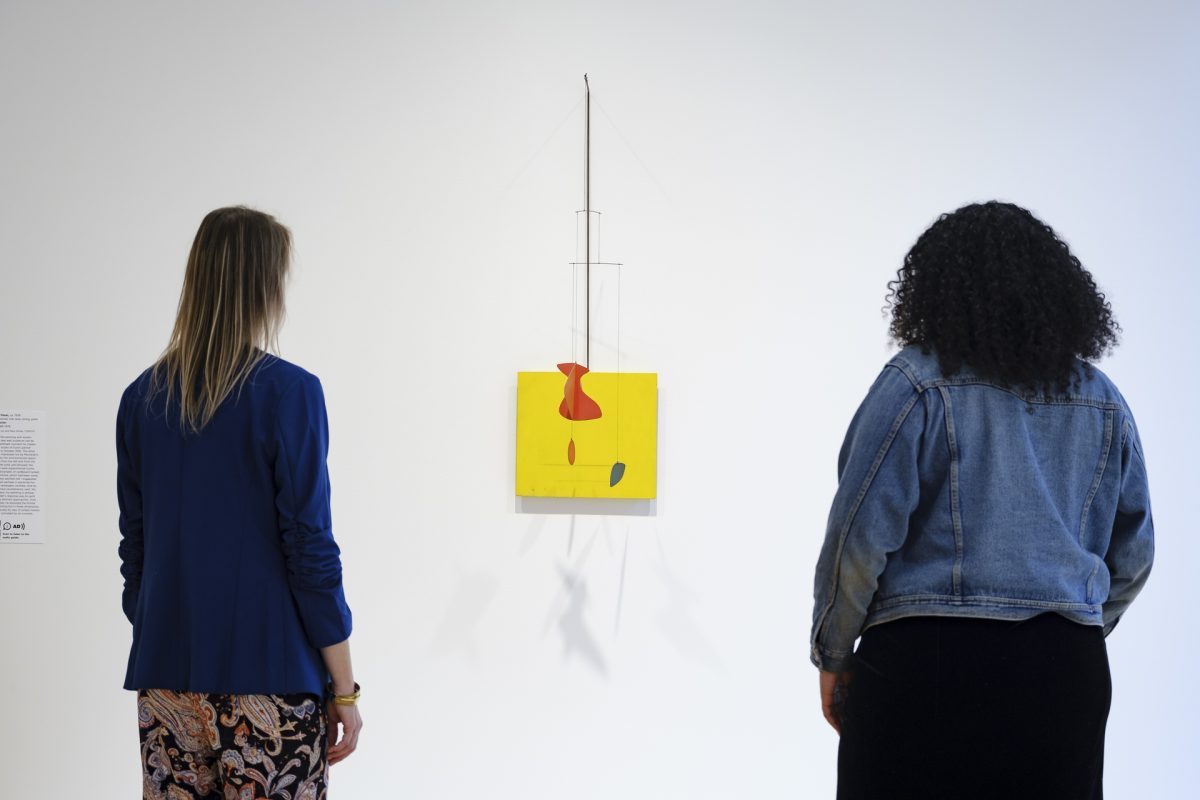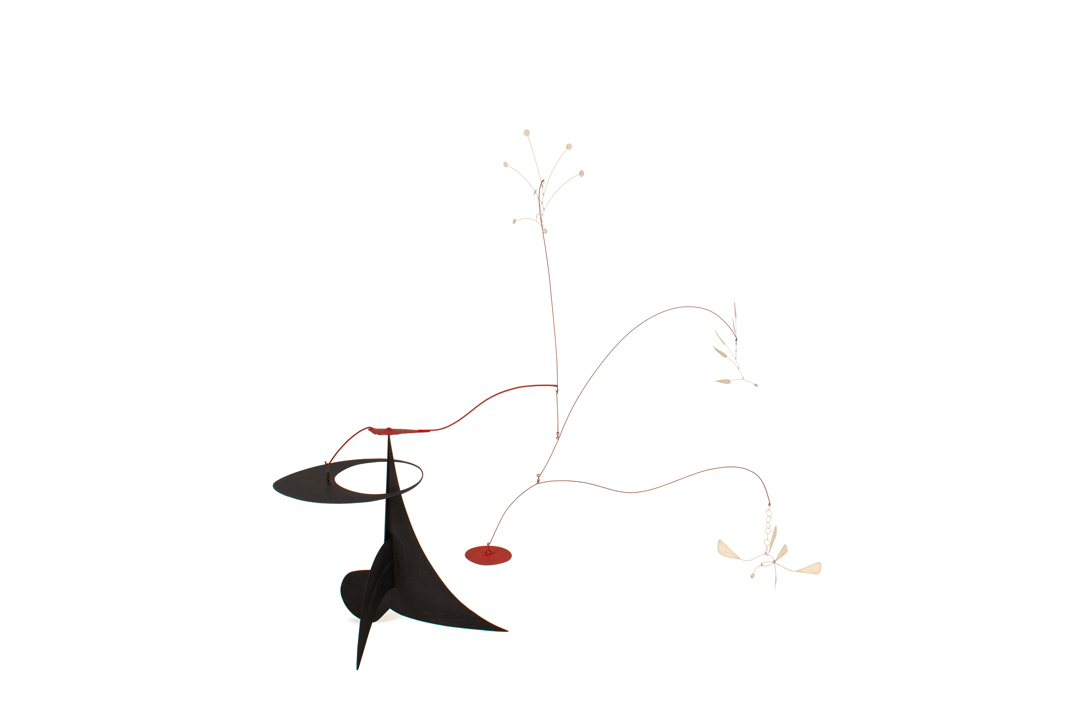Calder Smartphone Tour: Little Yellow Panel
Although it was never publicly exhibited in his lifetime, Little Yellow Panel exemplifies Alexander Calder’s desire to create “paintings in motion.” This exotic wall sculpture’s origin can actually be traced to a significant moment in Calder’s development that inspired him to experiment with movement: his visit to the studio of Dutch painter Piet Mondrian in October 1930.
The artist recalled being impressed not by Mondrian’s paintings but by the environmental space of his studio: “Light came in from the left and from the right, and on the solid wall between the windows there were experimental stunts with colored rectangles of cardboard tacked on. Even the victrola, which had been some muddy color, was painted red. I suggested to Mondrian that perhaps it would be fun to make these rectangles oscillate. And he, with a very serious countenance, said: ‘No, it is not necessary, my painting is already very fast.’”
In the wake of his visit, Calder began to work in the abstract. Beginning the following year, he explored the frontal formality of painting in three dimensions but with actual motion—elements in oscillation—usually by way of simple motors. Eventually, he experimented more freely with the possibilities of movement, suspending elements to be activated by air within wood frames or in front of panels made of painted plywood. Little Yellow Panel showcases how Calder ingeniously blurred the lines between painting and sculpture to reflect a choreography of nonobjective imagery.
Supplement your visit to Calder: In Motion, The Shirley Family Collection at SAM and learn more about Little Yellow Panel by tuning in to the exhibition’s free smartphone tour. Access it now on our SoundCloud or by scanning the QR code next to select works on view when exploring the museum’s galleries.
Little Yellow Panel, ca. 1936
NARRATOR: Little Yellow Panel is part of a series of works from the mid-1930s that explored the concept of ‘paintings in motion.’ The work blurs the lines between painting and sculpture: viewed from the front, its various elements appear to be positioned against a defined yellow background. But these elements can be moved around—so the composition changes. Artist Kennedy Yanko:
KENNEDY YANKO: What I like about it is that it’s perfect. It’s a perfect piece. Where the colors show up: they’re placed perfectly with just the right amount of randomness. It’s ironic. It’s calling upon all these different things. It captures, you know, an entrance into a more minimal thought of color and form. And it also holds his curiosity. And this really feels kind of like a pivotal moment of clarity.
NARRATOR: This was an intense period of innovation for Calder. In 1930, he visited the Dutch abstract artist Piet Mondrian. Calder was excited by the way the older artist had arranged his studio: Mondrian had pinned rectangles of colored cardboard to the walls, as he experimented with different compositions. For Calder, the whole space became an installation.
Following this visit, he made his first wholly abstract compositions. It was also at this time that he invented the kinetic sculptures we know as mobiles. It was his friend the French artist Marcel Duchamp who suggested the term. Sandy Rower:
ALEXANDER S. C. ROWER: He suggested it because in French the word mobile: it refers not only to motion, but it also means your motivation or your motive—Calder’s motivation, Calder’s motions, Calder’s motives. It was like that. It was a pun.
– Lily Hansen, SAM Marketing Content Creator
Image: Installation view of Calder: In Motion, The Shirley Family Collection, Seattle Art Museum, 2023, © 2024 Calder Foundation, New York / Artists Rights Society (ARS), New York, photo: Alborz Kamalizad.

